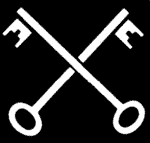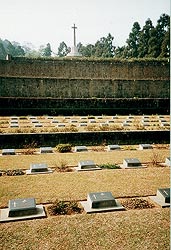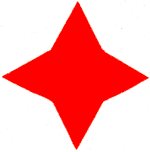Kohima
Kohima was the last great battle fought by British troops on Indian soil and one in which 1st Queen’s took a memorable part. The inscription on the 2nd Division war memorial erected there says with brief poignancy:
When you go home
Tell them of us, and say,
For your tomorrow
We gave our today
 The village stands 5000 feet above sea-level in a maze of peaks and ridges crossed by bridle paths at a pass with mountain ranges rising sharply to the north, east and west. Eighty miles to the south lies Imphal, the capital of Manipure state in India’s eastermost province of Assam some four hundred miles from Calcutta and seventy miles from the Burmese border. The pass was the best route between the Imphal plain and Assam and on the approach to Dinapur on the Bengal-Assam railway. It was there that the tide of the Japanese offensive aimed at breaking through into Assam was finally turned in April and May 1944.
The village stands 5000 feet above sea-level in a maze of peaks and ridges crossed by bridle paths at a pass with mountain ranges rising sharply to the north, east and west. Eighty miles to the south lies Imphal, the capital of Manipure state in India’s eastermost province of Assam some four hundred miles from Calcutta and seventy miles from the Burmese border. The pass was the best route between the Imphal plain and Assam and on the approach to Dinapur on the Bengal-Assam railway. It was there that the tide of the Japanese offensive aimed at breaking through into Assam was finally turned in April and May 1944.
The battle was one of attrition fought over many days in formidable terrain. By early April the small Kohima garrison, which consisted mainly of the 4th Royal West Kents, had been surrounded by units of the Japanese 31st Division. There followed a most gallant defence until the British 2nd Division broke through to relieve the remnants of the hard pressed garrison But most of the commanding Kohima Ridge remained in enemy hands. It was an immensely strong position some seven thousand yards long astride the Imphal-Dinapur road. In the words of Field Marshal Slim:
 |
| Kohima War Cemetery. (Click to enlarge) |
“The natural defensive strength of a succession of steep, wooded ridges had been improved by the Japanese genius for inter-supporting field works and concealment, until it was as formidable a position as a British army has ever faced. Its flanks, extending into high and most difficult country, were protected by inaccessibility”.
By 5th May both sides were exhausted and in close proximity. It was one thing to reach a Japanese bunker, another to enter it. The most effective weapon was the tank, firing solid shot at point-blank range but the wooded and steep terrain and the mud restricted their use. The battle-hardened 33 Brigade from the Arakan, which had been held back to cover the approaches from Imphal to Dinapur, was now brought into action and on the 7th May 1st Queen’s attacked Jail Hill from which on previous days heavy and accurate machine gun fire had held up 2nd Division.
The battalion attacked with great gallantry and reached its objective but was unable to hold it because the enemy could not be dislodged from deep bunkers, and of heavy fire from the adjoining feature known as GPT Ridge.

On 11th May 1st Queen’s took part in a co-ordinated Brigade dawn attack on Jail Hill and GPT Ridge. By late afternoon the positions were partially secured. On the 12th some tanks got through to destroy two of the bunkers which were only 15 yards in front of our forward troops, and on the 13th, patrols found the enemy had slipped away during the night. Twenty bunkers were found on the position, the main one large enough to hold 40 or 50 Japanese had been skilfully concealed and fortified with steel shutters that could be closed against grenades. The Battalion had lost 4 officers and 57 other ranks killed, and 6 officers and 106 other ranks wounded in the two gallant and skilful attacks.
By 22nd May the centre of Kohima had been cleared but the Japanese continued to fight doggedly on the Naga Village and Aradura Spur features. Of this remarkable enemy who still preserved Bushido, the Samurai code of behaviour of the previous century, and whose officers and warrant officers still carried swords which they used to good effect in battle, Field Marshal Slim said: “There can be no question of the supreme courage and hardihood of the Japanese soldiers. I know of no army who could have equalled them”. On the evening of 26th May the enemy counter-attacked the Brigade position in the Naga Village area in strength and was repulsed. On their Regimental Day, the Glorious First of June, 1st Queen’s supported by tanks attacked and captured the long contested stronghold of the Naga Village. The battalion was then withdrawn to Dinapur to rest and refit.
The time had now come for the Fourteenth Army to move to a full offensive on the Assam front which was to inflict massive casualties on the enemy, clear them from the Imphal Plain and provide the springboard for the re-occupation of Burma in 1945.
On 31st August 1944 a service was held on Jail Hill for the unveiling of a memorial which had been erected by the Queen’s pioneers to the officers and soldiers of the Battalion who had died in action at Kohima. It was attended by the GOCs of the 33rd Indian Corps and the 7th Indian Division, Lieutenant-General Stopford and Major-General Messervy. Lieutenant-Colonel Graham Duncombe, who had commanded the battalion, was awarded the DSO for his leadership in the Arakan and at Kohima.
Related
